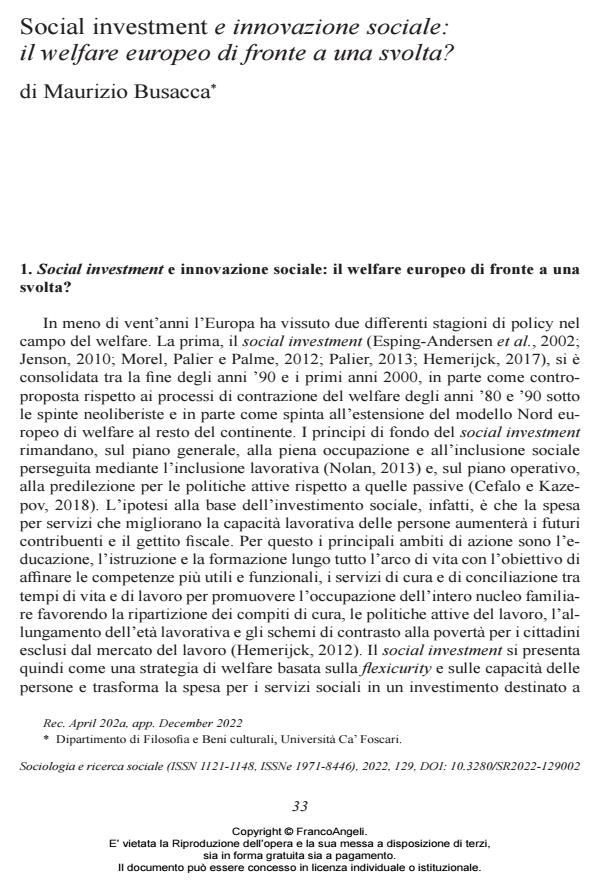Social investment e innovazione sociale: il welfare europeo di fronte a una svolta?
Titolo Rivista SOCIOLOGIA E RICERCA SOCIALE
Autori/Curatori Maurizio Busacca
Anno di pubblicazione 2023 Fascicolo 2022/129
Lingua Inglese Numero pagine 30 P. 33-62 Dimensione file 286 KB
DOI 10.3280/SR2022-129002
Il DOI è il codice a barre della proprietà intellettuale: per saperne di più
clicca qui
Qui sotto puoi vedere in anteprima la prima pagina di questo articolo.
Se questo articolo ti interessa, lo puoi acquistare (e scaricare in formato pdf) seguendo le facili indicazioni per acquistare il download credit. Acquista Download Credits per scaricare questo Articolo in formato PDF

FrancoAngeli è membro della Publishers International Linking Association, Inc (PILA)associazione indipendente e non profit per facilitare (attraverso i servizi tecnologici implementati da CrossRef.org) l’accesso degli studiosi ai contenuti digitali nelle pubblicazioni professionali e scientifiche
This article provides a critical reflection on the relationship between two seasons of policy that have greatly influenced the Italian welfare state over the last twenty years: social investment and social innovation. Integrating bibliographic analysis and field research, the article explores two public policies promoted by the Veneto Region in the field of the family and youth. While highlighting both many instances of both continuity and discontinuity in the two seasons of policy, the article identifies a common thread that binds them, namely the progressive shift of confidence from the state and the market (in social investment) to society and the market (in social innovation). The main element of continuity in the two seasons therefore appears to be the market, relied on for employment and the development of innovative social actions.
Maurizio Busacca, Social investment e innovazione sociale: il welfare europeo di fronte a una svolta? in "SOCIOLOGIA E RICERCA SOCIALE " 129/2022, pp 33-62, DOI: 10.3280/SR2022-129002